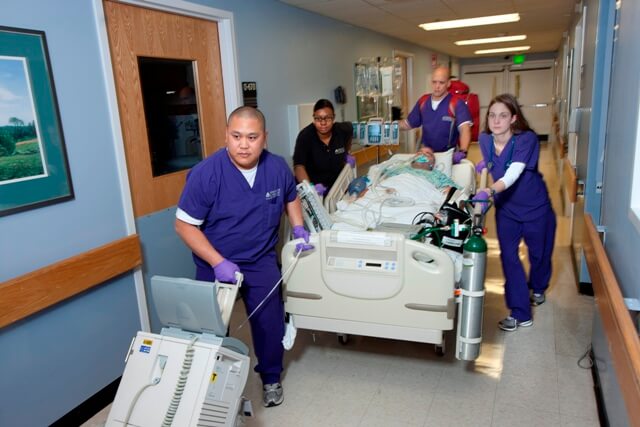By: Health Science Journal
Published: Health Science Journal – Volume 8, Issue 1
Date: 2014
Equipment used during transport is the most common risk factor for complications. A study observing the most frequent adverse events during intrahospital transports showed that 45.9% of them were related to equipment, 26.2% to the patient’s condition, 25.8% to lines and 2.2% to other factors.15 Moreover, a study conducted in Brazil to assess complications during intrahospital transport of patients on mechanical ventilation showed that 7.1% of complications were related to equipment, 7.1% to personnel of the transport team and 85.8 % to patient and the severity of his condition.16 Therefore, additional attention must be paid regarding the equipment. Firstly, when placing the equipment on stretcher, before transport, make sure that is secure and stable. Secondly, during transport, try not to make sudden movements that can throw the equipment on patient, causing injuries. After transport, before putting patient back to bed, beware for the patient’s tangling with the equipment which could lead to disconnection of lines and tubes or injuries.
Inadequate monitoring of a patient during transport is also a major risk factor. Significant deficiencies in special equipment may increase the likelihood of complications. The critically ill patient should receive the same level of monitoring as if was in the ICU. Thus, any unexpected hemodynamic changes will be properly and quickly identified and managed
Transporting a patient into a hospital, usually, includes passing through hallways, elevators and other areas that are unpleasant environments for an ill person, because of temperature alterations, noises, and many people, visitors, or hospital employees passing near the patient. It is, therefore, important, even for non-ICU patients, to be transported by well-trained personnel, who would know how to move without delays, protect patients from harm and inconvenience that could lead to complications and maintain patients’ dignity and respect through the crowded areas during transport.
Source: https://www.researchgate.net/profile/Despoina-Alamanou/publication/287572555_Intrahospital_transport_policies_The_contribution_of_the_nurse/links/58998fedaca2721f0db0bb22/Intrahospital-transport-policies-The-contribution-of-the-nurse.pdf
Image: https://www.hopkinsmedicine.org/sebin/f/b/Lifeline%20Internal%20Transport.jpg
Analysis:
The significance of this article articulates the risk factors, the role(s) of stand-by nurses, and also provides insight to the varying obstacles that will be encountered when transporting a patient to locations throughout a hospital. As a common theme, the implemented equipment contributes a percentage to the complications that arise during transportation. This entails the placement of ventilators prior to and during transport, the behavior displayed when transporting the patient with such equipment, and the delivery of the patient while continuing to account for the equipment’s wires, cords, and any other lose accessories that assist in operation. Moreover, in accordance to operation, this requires stead monitoring that can be maintained in all locations (i.e. ICU).
Lastly, as outlined, the obstacles that the care team members will encounter includes: hallways, elevators, temperature differences, hospital personnel, visitors etc. Such obstacles will always be present throughout the hospital, so it is crucial that the travel path is identified supported with the best suited individuals to ensure transportation is fulfilled with little to no complications.




